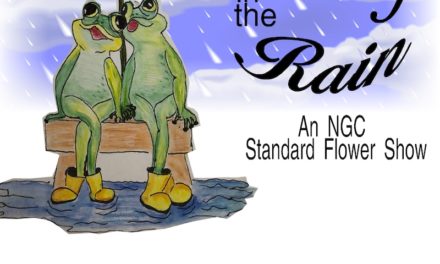 When the humidity in Beaufort softly fogs my brain, a good smack of fresh, cooler air that doesn’t come from an HVAC system is always good.
When the humidity in Beaufort softly fogs my brain, a good smack of fresh, cooler air that doesn’t come from an HVAC system is always good.
The past two weeks have been spent visiting family and touring gardens on the North Fork of Long Island. And yes, while the temperature was not that different from here by day, we often needed sweaters in the evenings! As I have been living away from that area for fifty years, it always seems new again to me when we visit.
Unlike the South Fork of Long Island where miles of big box stores and fast food places hide the magnificent mansions of the Hamptons, the North Fork remains quaint, unpretentious and somewhat lost in time. This not by accident; local regulations strictly prohibit typical urban sprawl, protecting the charming waterfront way of life. The industries that thrive are farming, and fishing and tourism. Sound familiar? Situated between Long Island Sound and Gardener’s Bay, there are miles of picturesque harbors separated by marshes and fields of rich, deep sandy soil
. As a child I remember those fields primarily grew potatoes. These days a wider variety of crops are grown and especially appreciated by the agritourists. Dozens of wineries dot the landscape, inviting visitors from all over the world to the tasting rooms. In addition to the vegetable farms, there are vast fields of cut flowers, and while we were there, people were buying them by the armfuls. I stood in the middle of a field of lavender, dizzy with the exquisite scent, and imagined I was in the South of France. There were also tree and shrub farms, including a new crop for that area, Crape Myrtles. Thanks to the research at the National Arboretum in Washington DC, hardier varieties were developed which now thrive in cooler climates. It seems strange to see a tree generally considered to be a southern icon on every front lawn up there and seeing many acres of them growing in the nursery fields was breathtaking; I have never even seen that here in South Carolina.
The backyard gardens I visited had much in common with those here in Beaufort. I noticed some late summer issues like lace bugs on azaleas at my nephew’s home and spider mites on an evergreen at my brother-in-law’s. Mild infestations can be controlled with a less toxic insecticidal soap or horticultural oil formulated for warm weather application. Clemson has recommendations for more serious issues. (http://www.clemson.edu/extension/hgic/pests/plant_pests/shrubs/hgic2051.html)
Other universal garden concerns for this month include deadheading the flowering plants and dividing overgrown perennials. Replant the divisions promptly or share the bounty with your friends and neighbors.
It’s nice to see gardens in other areas, but local showstoppers this month are the Angel’s Trumpets, Brugmansia; they had a slow start this year but the warm weather these past few weeks have helped them to catch up. All the sages are looking good, especially the Mexican Bush Sage, Salvia Leucantha; in addition to the usual variety with velvety violet flowers I have seen a new cultivar with soft pink flowers that look charming with the blue gray leaves. I can just dream of what fields of them would look like growing along our roads.
Our long growing season and extraordinary scenery in Beaufort lends itself to attracting the agritourists, those interested in our abundant resources. Adding more horticultural crops just seems like a natural to me. What do you think?
Read more How Does Your Garden Grow








